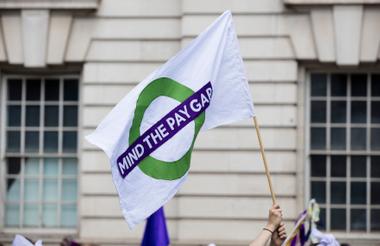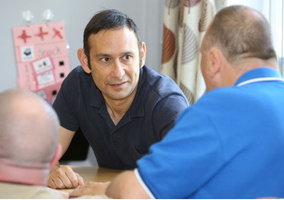Some 11% of the largest charities in the UK currently report their ethnicity pay gap, according to research by Civil Society.
Analysis of the top 250 charities by income, according to Charity Finance’s 100 and 250 Indexes, shows that 27 published their ethnicity pay gap for 2022.
The 27 charities that reported data had an ethnicity pay gap with a combined average of 21.9% in favour of white staff.
This compares to a UK national average ethnicity pay gap of 2.3%, recorded most recently in 2019 by the Office for National Statistics.
Year-on-year changes
The ethnicity pay gap measures the difference in average pay between ethnic minority staff and their white colleagues.
Unlike the gender pay gap, which organisations with more than 250 employees must report on, there is no legislation or mandate for reporting on ethnicity pay gap data.
However, the government has published guidance for organisations to voluntarily measure their ethnicity pay gap.
Charities in the sample varied in the way they reported their ethnicity pay gaps.
Some 21 charities reported their ethnicity pay gap for 2021 and 2022, with one in three of these seeing an increase last year.
Two had an ethnicity pay gap that stayed the same from 2021 to 2022, nine had a pay gap that increased, while 10 had pay gaps that decreased.
Four more charities in the sample had previously published their ethnicity pay gap publicly, but had not yet done so for 2022 at the time of writing.
Many charities had a pay gap that favoured ethnic minority staff
Some 10 of the charities that reported for 2022 had an ethnicity pay gap in favour of ethnic minority staff, while the remaining 17 had a pay gap in favour of white people.
Oxfam had the lowest ethnicity pay gap in the sample with a median of -28.6%, with the negative figure indicating a pay advantage for Black, indigenous and other people of colour (BIPOC) in the organisation.
This is from a sample of the 76% of its staff that disclosed their ethnicity. Of those that gave details, 49% of staff identified as BIPOC compared to 51% white.
Some 15% of staff in the highest job grades identified as BIPOC compared to 9% in lower job grades.
“Set within the context of lower numbers of BIPOC staff overall, this may be driving an upwards skew in the positive pay gap recorded between BIPOC and white-identifying staff,” the report reads.
Ethnicity pay gaps closest to 0%
The charities with the ethnicity pay gaps closest to 0% were Plan International UK (-0.3%) and WaterAid (-0.6%).
This was the first year the Plan International UK reported on its ethnicity pay gap, so there is no comparable data.
Meanwhile, WaterAid has reported on this pay gap for the last two years and has seen a decrease from 5.6 percentage points on the year prior.
In its report on this, WaterAid chief executive Tim Wright states: “Whilst today there is limited external sector data against which this can be compared, it is encouraging that this is below 5% and, in the case of the median gap, this is inverse.
“We will continue to track and review the data to fully understand the reasons.”
Highest pay gaps
The charity with the highest ethnicity pay gap in the sample was the Nursing and Midwifery Council (NMC) with a median ethnicity pay gap of 27.1%, the same figure it reported the year before.
Its workforce is made up of 38% Black and minority ethnic (BME) staff and 48% white staff. The rest of its workers did not declare their ethnicity.
64% of staff in its highest-paid roles are white, while 25% come from BME backgrounds. Meanwhile, 48% of staff in its lowest paid roles were from BME backgrounds, a decline of 4 percentage points on the year prior.
NMC says in its report that it has an equity, diversity and inclusion (EDI) plan that is “holistic in its approach; however, it sets out specific actions which will move the dial particularly on race equality”.
The second highest ethnicity pay gap in the sample is South Bank Centre, whose ethnicity pay gap increased by 12.2 percentage points to 23.8% in 2022.
This means on average that ethnic minority staff earn 76p for every £1 their white colleagues make.
Despite this increase in the ethnicity pay gap, there has been an increase of Black, Asian and ethnically diverse staff in the three lowest pay quartiles.
The report reads: “We will continue to work to increase representation in all quartiles and specifically consider our recruitment strategies, talent pipeline and retention activities.”
The third highest ethnicity pay gap was at international aid charity Unicef UK, which reported an 18.5% gap. This is a decrease of 2 percentage points on the year prior.
Meanwhile, the amount of employees disclosing their ethnicity data has increased from 91% to 93%.
Staff from minoritised ethnic communities were most prevalent in the lowest pay grade at 46%, compared to 12% in the highest pay grade.
In its report, Unicef UK writes: “Our ethnicity pay gap overall has decreased but is still significant at a median of 18.5%. The pay gap specifically for Black colleagues has seen an increase of 2.3 percentage points.”
Money4YOU: Ethnicity pay gap reporting should be mandatory
AmickyCarol Akiwumi, chief executive of financial education charity Money4YOU, said the government should introduce a mandatory rule for organisations to report their ethnicity pay gap alongside current gender pay reporting requirements.
Akiwumi also renewed her call for the Charity Commission to incorporate diversity data into its register of charities.
“The absence of comprehensive data on ethnicity pay gaps not only allows employers, including large charities advocating for social and economic justice, to evade accountability but also perpetuates the inequalities that have long plagued our society,” she said.
“Overwhelming and well-documented evidence of systemic racism within the UK charity sector should serve as a powerful catalyst for both charities and the government to take decisive action in closing the ethnicity pay gap. However, this imperative is currently obscured by the lack of comprehensive data.
“The civil service has set a commendable example by consistently reporting workforce diversity data for over a decade, including ethnicity pay gap data.
“Moreover, the government recently published comprehensive guidelines on ethnicity pay gap reporting for all employers. All it has to do now is make that reporting mandatory. This would not only demonstrate a commitment to addressing economic inequalities but also pave the way for a fairer and more equitable society for all.”
Editor's note: This article has been edited to reflect the UK national ethnicity pay gap is 2.3% not 31.3%
Related articles












